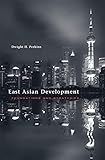East Asian development foundations and strategies Dwight H. Perkins
Material type: TextLanguage: English Series: The Edwin O. Reischauer lecturesPublisher: Cambridge, Mass. [u.a.] Harvard Univ. Press 2013Description: 213 S. graph. Darst. 24 cmContent type:
TextLanguage: English Series: The Edwin O. Reischauer lecturesPublisher: Cambridge, Mass. [u.a.] Harvard Univ. Press 2013Description: 213 S. graph. Darst. 24 cmContent type: - Text
- ohne Hilfsmittel zu benutzen
- Band
- 9780674725300
- Entwicklung
- Wirtschaftswachstum
- Entwicklungspolitik
- Wachstumspolitik
- Entwicklungsstrategie
- Ostasien
- Economic development -- East Asia
- Economic development -- Southeast Asia
- Economic development -- East Asia
- Economic development -- Southeast Asia
- East Asia -- Economic conditions
- Southeast Asia -- Economic conditions
- East Asia -- Economic conditions
- Southeast Asia -- Economic conditions
- Ostasien
- Wirtschaftsentwicklung
- Ostasien
- Wirtschaftsentwicklung
- 338.95 23
- HC460.5
- LB 55430
- QG 800
| Item type | Current library | Collection | Call number | Status | Date due | Barcode | |
|---|---|---|---|---|---|---|---|
 single unit book
single unit book
|
HAC Library - Holdings of the American Academy in Berlin HAC – 1st floor – Library Room – Open Stacks | R (Reference collection) | R:HC460.5 .P47 2013 (Browse shelf(Opens below)) | Available | 2023-1276 |
Includes bibliographical references and index
The historical foundations of East Asian development -- Understanding East Asian growth -- Government intervention versus laissez-faire in Northeast Asia -- Successes and failures in Southeast Asia -- From command to market economy in China and Vietnam -- The end of high growth rates.
Taking both a historical and a comparative view, Perkins explores the nature of economic growth in East Asia. He focuses on ten sites in East and Southeast Asia that achieved a substantial degree of economic success: China, Japan, South Korea, Taiwan, Hong Kong, Singapore, Malaysia, Thailand, Indonesia, and Vietnam. Secondarily, he discusses the failures in growth of other countries in the region, notably the Philippines. He analyzes why several of the economies of East and Southeast Asia have achieved rates of growth seldom witnessed elsewhere in the world (with a few exceptions); why some of the economies in the region have done better than the others; and why the richest economies eventually have all slowed down. He examines income distribution and the places where income inequality resulted. In looking into the sources for the high rate of growth, he analyzes how these economies and societies transformed the living standards of most their citizens.
"Taking both a historical and a comparative view, Perkins explores the nature of economic growth in East Asia. He focuses on ten sites in East and Southeast Asia that achieved a substantial degree of economic success: China, Japan, South Korea, Taiwan, Hong Kong, Singapore, Malaysia, Thailand, Indonesia, and Vietnam. Secondarily, he discusses the failures in growth of other countries in the region, notably the Philippines. He analyzes why several of the economies of East and Southeast Asia have achieved rates of growth seldom witnessed elsewhere in the world (with a few exceptions); why some of the economies in the region have done better than the others; and why the richest economies eventually have all slowed down. He examines income distribution and the places where income inequality resulted. In looking into the sources for the high rate of growth, he analyzes how these economies and societies transformed the living standards of most their citizens"--
There are no comments on this title.
